Table of Contents
Taking care of your furry friend is no easy task, especially when it comes to bath time. In Singapore’s warm and humid climate, it becomes essential to maintain your dog’s hygiene. But how often should you bathe your dog in Singapore? Understanding the unique needs of your pet is crucial in ensuring their health and happiness. In this article, we will explore the factors that determine the ideal bathing frequency for dogs in Singapore, providing you with valuable insights to keep your canine companion fresh and clean.
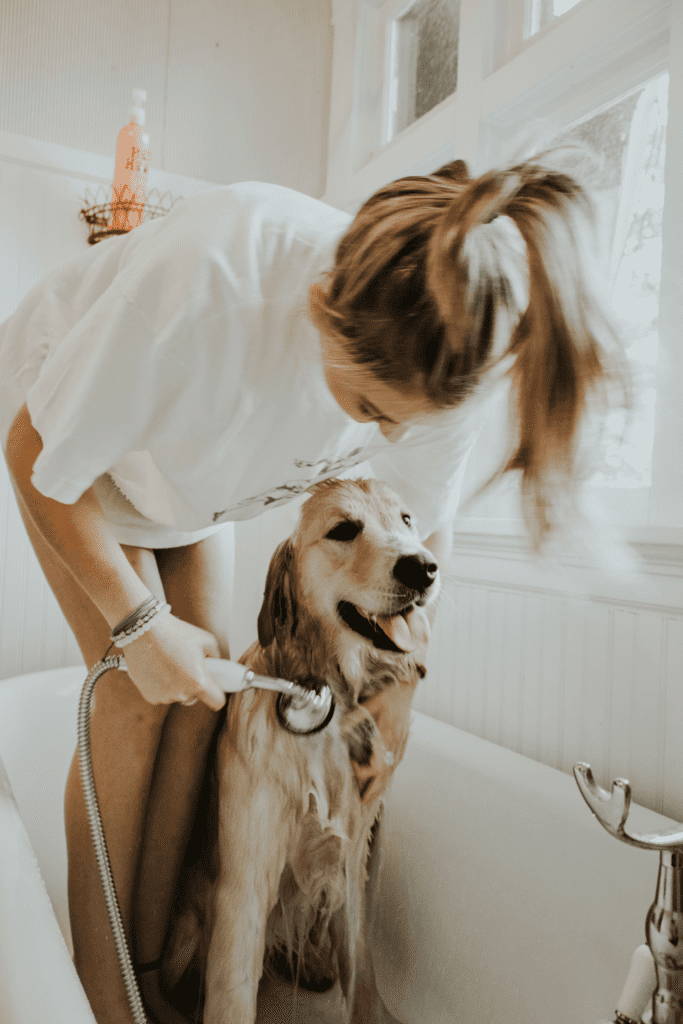
How often to bathe a dog in Singapore
Taking care of your furry friend is essential to ensure their well-being and overall health. One aspect of dog care involves bathing them regularly to keep their coat clean and their skin healthy. However, determining the right frequency of baths for your dog can be a daunting task, as it depends on various factors. In this article, we will explore the different factors to consider when determining how often to bathe your dog in Singapore.
Factors to consider when determining bathing frequency
Several factors come into play when deciding how often to give your dog a bath. These factors should be considered to determine the appropriate bathing frequency for your pup. Let’s take a closer look at each of these factors:
Size and age
The size and age of your dog can influence how often they need to be bathed. Smaller dogs, such as Chihuahuas or Toy Poodles, often require more frequent baths compared to larger breeds. Additionally, puppies may need more baths as they explore and get into messes more frequently. As your dog grows older, their bathing needs may change, and you can adjust the frequency accordingly.
Overall health
The overall health of your dog is an important consideration when determining bathing frequency. Dogs with skin conditions or allergies may require more frequent baths to alleviate discomfort and keep their skin clean. On the other hand, dogs with healthy skin and coat may not require baths as frequently.
Personal preferences
Your personal preferences as a dog owner can also play a role in how often you choose to bathe your dog. Some owners prefer to bathe their dogs more regularly, enjoying the fresh scent and cleanliness, while others may opt for a less frequent bathing routine. It is important to strike a balance between keeping your dog clean and not overdoing it, as excessive bathing can strip their coat of natural oils.
Living environment
The environment in which your dog lives can affect how often they need a bath. Dogs who spend most of their time indoors may not require frequent baths unless they get particularly dirty or develop odors. However, dogs who spend a lot of time outside, especially in parks or on beaches, may need more regular bathing to remove dirt, sand, and potential allergens.
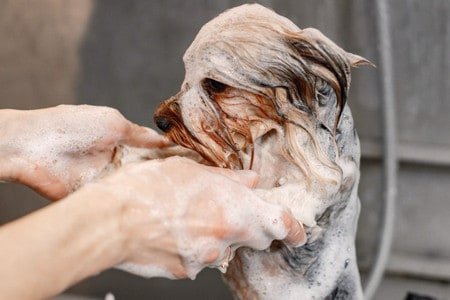
Breed-specific considerations
Different dog breeds have unique characteristics that impact their bathing requirements. It is important to consider these breed-specific considerations when deciding how often to bathe your dog:
Double-coated breeds
Double-coated breeds, such as Huskies or Golden Retrievers, have a dense undercoat beneath their outer coat. These breeds have a natural self-cleaning mechanism, and frequent baths can disrupt the balance of their natural oils. Bathing them too often can lead to dry skin and coat. Generally, double-coated breeds should be bathed only when necessary, such as when they get overly dirty or develop an odor.
Short-haired breeds
Short-haired breeds, like Beagles or Boxers, typically require less frequent bathing compared to long-haired breeds. Their short coat is less prone to matting or tangling and can be easily maintained with regular brushing. Bathing once every two to three months is usually sufficient for most short-haired breeds unless they have specific skin conditions or get unusually dirty.
Hairless breeds
Hairless dog breeds, such as the Chinese Crested or Peruvian Inca Orchid, require special attention when it comes to bathing. Due to their lack of fur, their skin can be more sensitive and prone to dryness. Consulting with a professional groomer or veterinarian is advisable to determine the appropriate bathing frequency and the use of specialized skin care products.
Water-repellent breeds
Some dog breeds have water-repellent coats, designed to keep them dry even in wet conditions. Breeds like Labradors or Newfoundlands have a coat that naturally repels water, allowing them to stay relatively clean. For these breeds, occasional baths can help remove dirt or odors, but excessive bathing may strip their coat of its natural oils.
Dog’s activity level and lifestyle
Your dog’s activity level and lifestyle can also influence how often they need a bath. Consider the following factors when determining bathing frequency:
Active and outdoor dogs
If your dog enjoys outdoor activities, such as regular walks, runs, or swimming, they may require more frequent baths. Activities like swimming can expose your dog to chlorine or saltwater, which should be rinsed off to prevent skin irritation. Additionally, dogs who love rolling in the grass or mud may need more frequent baths to keep their coat clean.
Indoor and less active dogs
Indoor dogs or dogs with a less active lifestyle may not need baths as frequently. However, it is still important to keep their coat clean and free from dirt or debris. Regular brushing and occasional spot cleaning, such as wiping their paws after outdoor walks, can help maintain their hygiene without the need for frequent baths.
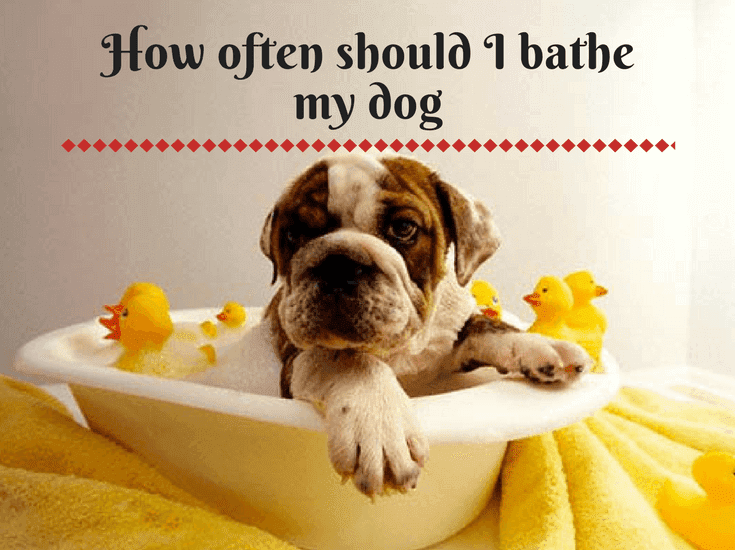
Climate and weather
The climate and weather in Singapore can also impact how often you should bathe your dog. Consider the following factors when determining bathing frequency based on the climate:
Hot and humid climate
Singapore’s hot and humid climate can make dogs prone to sweat and dirt buildup. Regular bathing can help prevent skin infections and keep your dog comfortable. However, be cautious not to overbathe, as excessive bathing can strip their skin of essential oils, leading to dryness and irritation. Regular spot cleaning or using waterless shampoos can be effective alternatives between baths.
Cooler climates
If you reside in an air-conditioned environment or travel to cooler climates with your dog, they may require fewer baths. During colder seasons, dogs are less likely to sweat or get dirty, which reduces the need for frequent bathing. However, regular grooming practices, such as brushing and occasional wipe downs, should still be maintained to keep their coat clean and healthy.
Coat type and condition
The type and condition of your dog’s coat are important factors to consider when determining bathing frequency. Different coat types require different care, and understanding your dog’s coat needs can help you determine how often to bathe them. Consider the following factors:
Long and dense coats
Dogs with long and dense coats, such as Shih Tzus or Maltese, require regular grooming and brushing to prevent matting and tangling. However, these breeds may not necessarily need frequent baths unless they get dirty or develop an odor. Instead, focus on maintaining their coat’s cleanliness through regular brushing to remove any debris or tangles.
Short and thin coats
Breeds with short and thin coats, like Greyhounds or Dobermans, typically do not require frequent baths. Their short hair is easier to maintain and less prone to matting. Regular brushing will help remove loose hairs and keep their coat looking shiny and healthy.
Thick and curly coats
Dogs with thick and curly coats, such as Poodles or Bichon Frises, require regular brushing and maintenance. These breeds may need more frequent baths to avoid matting and tangling, as their hair texture tends to trap debris and dirt. Consult with a professional groomer to determine the appropriate bathing frequency and grooming routine for these breeds.
Dry and brittle coats
If your dog has dry and brittle hair, it is advisable to avoid frequent baths, as this can further dry out their coat and skin. Instead, focus on providing them with a balanced diet and using moisturizing shampoos or conditioners specifically formulated for dry coats. Regular brushing will help distribute natural oils and promote a healthier coat.
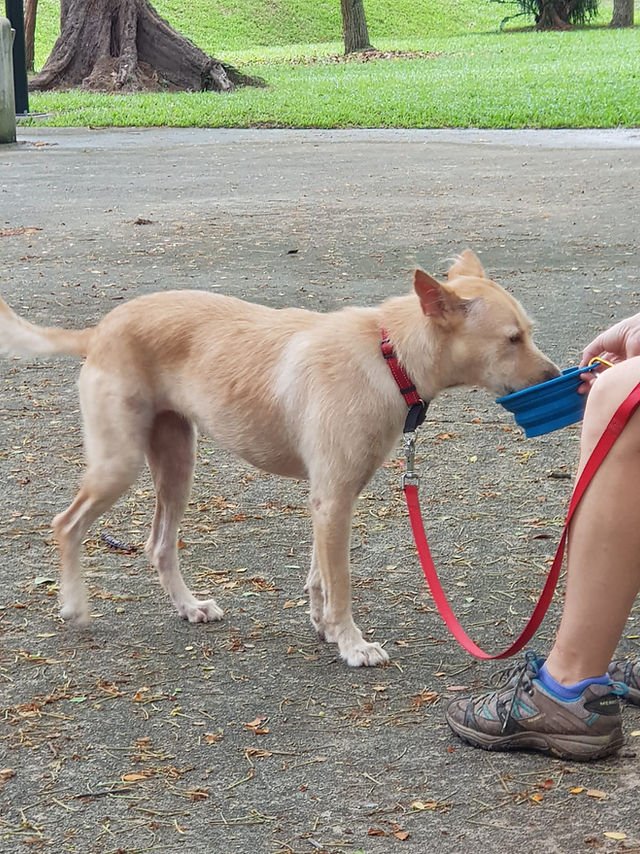
Skin conditions and allergies
Skin conditions and allergies can greatly impact how often you should bathe your dog. It is important to understand your dog’s specific needs and consult with a veterinarian if they have any underlying skin issues or allergies. Consider the following factors:
Sensitive skin
Dogs with sensitive skin may require special attention when it comes to bathing. Harsh or fragranced shampoos can irritate their skin, leading to dryness or itching. In such cases, using hypoallergenic or gentle shampoos and conditioners can help maintain their skin’s health and minimize discomfort. Consulting with a professional groomer or veterinarian is advisable to determine the appropriate bathing frequency.
Allergies to certain products
If your dog has allergies to specific ingredients or products, it is important to avoid using them during bath time. These allergies can manifest as skin irritations or excessive itching. Identifying and avoiding allergens will help maintain your dog’s skin health. It is advisable to consult with a veterinarian to determine suitable hypoallergenic alternatives or bathing routines.
Flea and tick infestations
If your dog has a flea or tick infestation, regular bathing with appropriate flea and tick shampoos is necessary to rid them of these pesky parasites. Follow the instructions provided by your veterinarian to ensure the effective removal of fleas and ticks. Treating your dog’s environment is equally important in preventing reinfestations.
Grooming routine and practices
In addition to bathing, maintaining a regular grooming routine is essential for your dog’s overall cleanliness and well-being. Consider the following factors when establishing a grooming routine:
Regular brushing and combing
Regular brushing and combing sessions help remove loose hair, prevent matting, and distribute natural oils throughout your dog’s coat. The frequency of brushing depends on your dog’s coat type and length. Longer-haired breeds may require daily brushing, while short-haired breeds may only require it once or twice a week.
Frequency of nail trims
Nail trims are an important part of maintaining your dog’s hygiene and can help prevent discomfort or injury. The frequency of nail trims varies depending on your dog’s activity level and the rate of nail growth. On average, dogs may require nail trims every three to four weeks. However, it is essential to monitor your dog’s nails regularly and trim them when they become too long.
Ear cleaning practices
Regular ear cleaning is crucial to prevent ear infections and maintain your dog’s ear health. The frequency of ear cleaning depends on your dog’s predisposition to ear issues and their environment. Breeds with floppy ears, such as Cocker Spaniels or Basset Hounds, may require more frequent cleanings to prevent moisture buildup. It is important to use appropriate ear cleaning solutions and follow proper techniques to avoid injury or irritation.
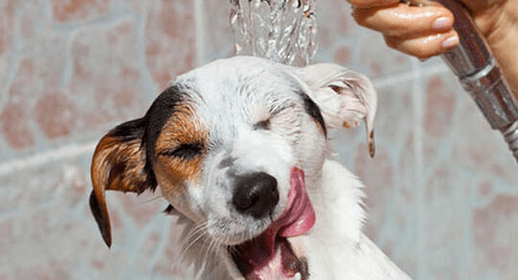
Hygiene and cleanliness
Maintaining a clean living environment for your dog is equally important as their personal hygiene. Consider the following practices to promote a clean and healthy environment:
Maintaining a clean living environment
Regularly cleaning your dog’s living space, such as their bed, crate, or designated area, helps prevent dirt, bacteria, and parasites from accumulating. Wash bedding regularly and vacuum floors to remove hair and debris. Cleaning their bowls, toys, and grooming tools is also necessary to prevent the spread of germs and maintain your dog’s hygiene.
Preventing odors and dirt buildup
Between baths, you can use dry shampoos or wipes to freshen up your dog’s coat and remove any visible dirt or odors. These products are especially useful for dogs who require less frequent bathing or are prone to skin sensitivities. Consult with a professional groomer or veterinarian to find the right products for your dog’s specific needs.
Veterinary recommendations
It is always advisable to seek advice from your veterinarian when determining the appropriate bathing frequency for your dog. They can provide valuable insight into your dog’s individual needs, taking into account any existing health conditions or concerns. Your veterinarian can guide you on the best bathing practices, frequency, and suitable products or treatments for your dog’s unique requirements.
Signs that indicate a bath is needed
While establishing a regular bathing routine is important, there are certain signs that indicate when your dog may need a bath sooner than anticipated. Keep an eye out for the following signs:
Strong odor
If your dog has a noticeably strong odor, even shortly after a bath, it may be a sign that they require another bath. Certain odors can indicate a skin infection or underlying health issue that should be addressed by a veterinarian.
Visible dirt and debris
If your dog’s coat is visibly dirty or covered in debris, it is a clear indication that they need a bath. Dogs who love to roll in the mud or explore outdoors may get dirty more frequently and require more regular baths.
Excessive shedding
If you notice an increase in your dog’s shedding, it may be a sign that their coat needs attention. Frequent brushing can help remove loose hair, but a bath may be necessary to remove excess shedding and promote a healthier coat.
Itching and scratching
Frequent itching and scratching can indicate skin irritations or allergies. If your dog is scratching excessively, it may be beneficial to give them a bath using hypoallergenic or soothing shampoos to provide relief and remove potential irritants.
Determining the appropriate bathing frequency for your dog in Singapore requires consideration of various factors, from breed-specific needs to your dog’s lifestyle and overall health. Striking a balance between cleanliness and maintaining your dog’s natural oils is key. By carefully evaluating these factors and consulting with professionals, you can develop a bathing routine that keeps your dog clean, healthy, and happy.



